by Ocean Robbins: And now, the least click-baity opening sentence in the history of the internet: Exercise is good for you…
And hoo boy is it good for you; for your longevity, for your mood, for your creativity, for your long-term brain health, for healing, for sleep, for stress management, for weight management, for sexual health, for changing dysfunctional habits, for strengthening muscles and bones, for improving balance and reducing your risk of falling, and for your ability to read long sentences like this and remember how they started (that is, your focus).
And if we played a quick word game, and I asked you to blurt out the answer to the question, “Where do people go to exercise,” you would probably answer, “the gym.” After all, that’s the cultural and commercial default: hit the gym a few times a week, do your reps and your cardio, and boom, you’re done.
And there’s nothing wrong with the gym, if that’s your thing. It can provide equipment you don’t have, support and guidance from professional trainers, a community, and 19 TV screens showing reruns of House Hunters, Fixer Upper, and Good Bones.
But if you’re not a gym rat, no need to despair. If all that noise and grunting and stimulation isn’t for you, if you prefer more solitary physical activity, or if you don’t want to fork over $49 every month, you may be in luck. Some research shows that exercising outdoors, in nature, may actually provide more health and well-being benefits than indoor workouts.
In this article, we’ll look at some ways green exercise can benefit you, the exerciser. And we’ll also explore the question of whether green exercise can have a positive (or a negative) impact on the planet.
What Is Green Fitness?
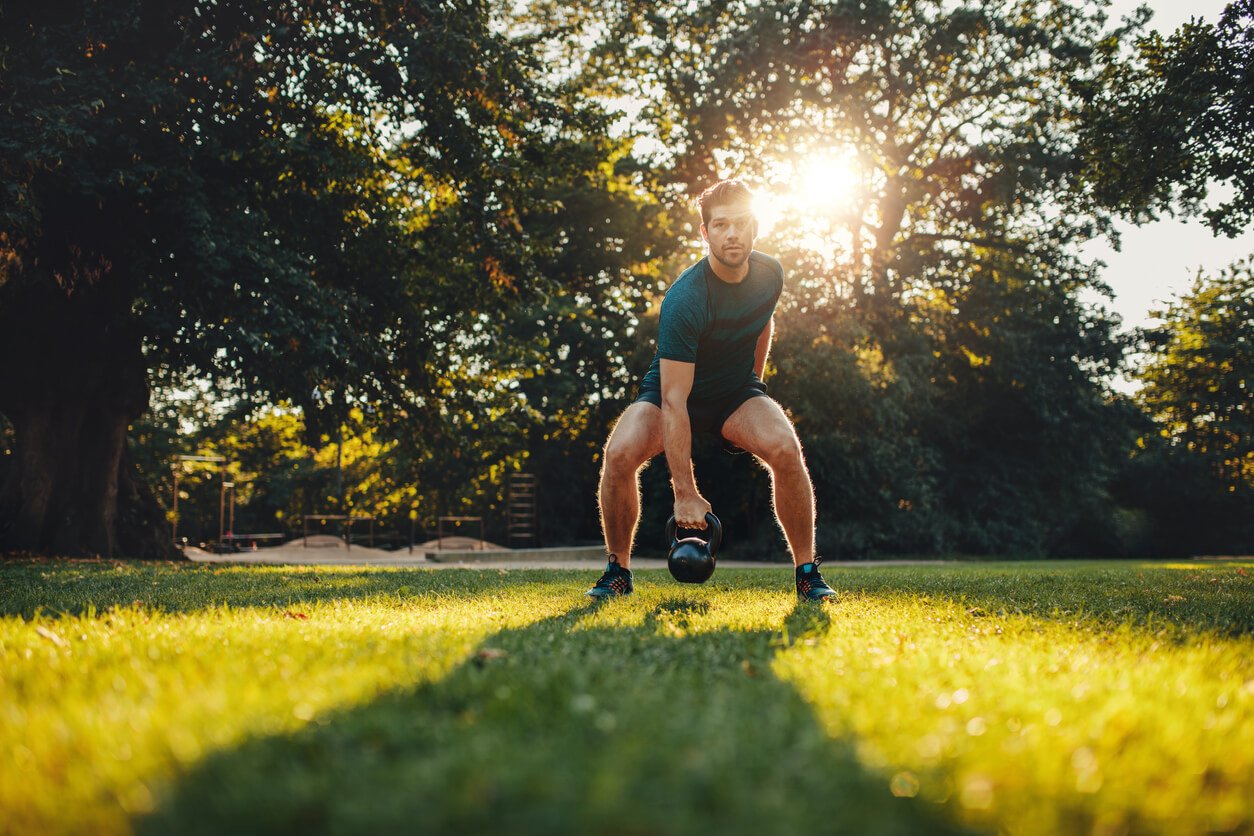
Green fitness, as defined by Essex University researchers, is simply physical exercise that takes place in a natural, outdoor environment. While the term was coined in 2003, moving in nature is not a new concept. In fact, the idea of “nature” only became a thing once humans separated themselves from it in climate-controlled boxes that we call homes and workplaces.
We evolved in and as part of nature. As such, we have an inherent need to connect with the outdoors. We need light cues from the sun to regulate our circadian cycles. We need regular contact with environmental bacteria to keep our microbiomes diverse and robust. And we require relaxation cues in the form of vistas and sources of awe to reset our nervous systems even in the midst of often stress-filled lives.
In fact, our modern industrialized lifestyles that have separated us from nature may be inducing a brand new disorder, first named by author Richard Louv in his book Last Child in the Woods: nature deficit disorder.
Since Louv wrote the book in 2003, our distance from nature and natural spaces has only grown. Many of us spend the majority of our time indoors and in front of screens. Some people, especially those in urban environments, don’t have easy access to green spaces at all.
So for many of us, if we want to experience the healing powers of nature — physically, mentally, emotionally, and spiritually — we need to proactively make time for such encounters. And one great way to take in lots of nature is through green fitness.
3 Ways Green Fitness Can Benefit You

As we’ve seen, exercise of any sort — providing it’s done safely and within your limits — is beneficial for your health. A comprehensive 17-year study of almost 500,000 Americans found a correlation between exercising and a reduction in all-cause mortality. Specifically, aerobic exercise lowered participants’ chances of dying more than resistance (strength) training. But the clear winner was a combination of aerobic and strength workouts. Folks who engaged in both were 40% less likely to die during a given year than their sedentary counterparts.
Outdoor exercise offers many additional benefits, so much so that urban planners are urging cities to improve access to nature as a means of reducing the financial burden of disease on their populations. These benefits can be physical, psychological, and motivational. Let’s start with those directly linked to physical health.
1. Green Exercise Improves Physical Health
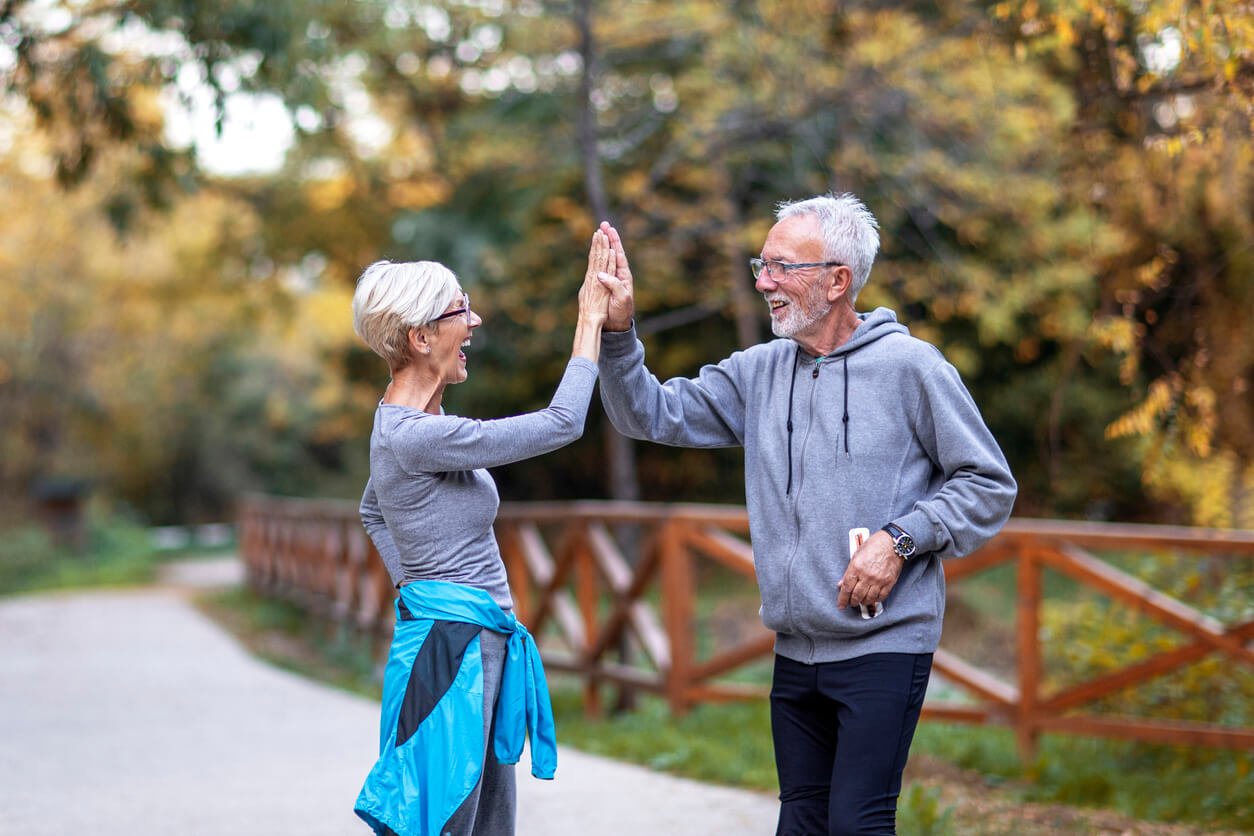
One surprising benefit of exercising outdoors is fewer injuries. It turns out that running on treadmills and doing other repetitive motions on gym equipment can lead to repetitive strain injuries. Think about it; our bodies have evolved for natural settings, which include constant variations of terrain. Researchers found that outdoor running, especially in areas with hills, required greater ankle flexion, which can strengthen muscles and provide greater stability over time.
Exercising in nature also contributes to healthier blood pressure and cortisol levels. Experts surmise that since humans evolved outdoors, there’s something about certain outdoor environments that signal safety and ease to our nervous systems, which regulate blood pressure and stress hormone secretion.
Researchers from Charles University in the Czech Republic measured the changes in body fat percentage in overweight and obese children ages 6-14 who were given access to outdoor activities, including walking, cycling, inline skating, and outdoor games. They found that access to these outdoor activities increased their movement by 30%, which helped them drop body fat.
Microbiome Benefit
If you think you enjoy exercising in nature, the microorganisms that live in and on you like it even more!
We know that our microbiome benefits from exercise in general. And now we’re discovering that exercising outdoors — heck, just being outdoors — can have an especially positive impact on your microbiome. People who live in rural areas are less likely to suffer from allergies than their urban counterparts. But even city parks can be “islands of bacterial diversity.” And walking, running, cycling, or skating through those green spaces can transfer some of that microbial diversity to the communities of teeny critters who live on our skin and inside our bodies.
Exercise Variability
Also, there’s a concept in exercise science known as “muscle confusion.” This refers to the strategy of constantly altering workouts, so your muscles can’t adapt to a single protocol, and therefore stop improving in response to continual challenge. It’s easy to fall into set routines at the gym, where you might move your body in exactly the same way every time you get on the shoulder press or leg curl machine.
Nature, however, offers a natural variability and unpredictability that confounds our muscles and perception and continually challenges us. Because outdoor environments are less controlled than indoor environments, they provide greater diversity of experiences, contours, and temperatures — forcing our muscles to adapt to all of them. This can be good for developing core strength, agility, robust temperature regulation, and many other elements that are beneficial for overall health.
Vitamin D
Finally, outdoor exercise can benefit us thanks to exposure to sunlight. We replenish our levels of Vitamin D when sunlight shines on our skin. That’s a good thing, considering how many people in industrialized countries may be borderline deficient in vitamin D.
In the US, for example, the overall rate of vitamin D deficiency is just under 42%. But that number skews worse for people of color. Over 80% of Black people and 70% of Hispanics are not getting enough vitamin D. Symptoms of insufficiency include greater risk of cardiovascular and metabolic diseases, as well as greater incidence of depression, ADHD, and autism. (For more on vitamin D, click here.)
2. Green Fitness Supports Psychological and Mental Health
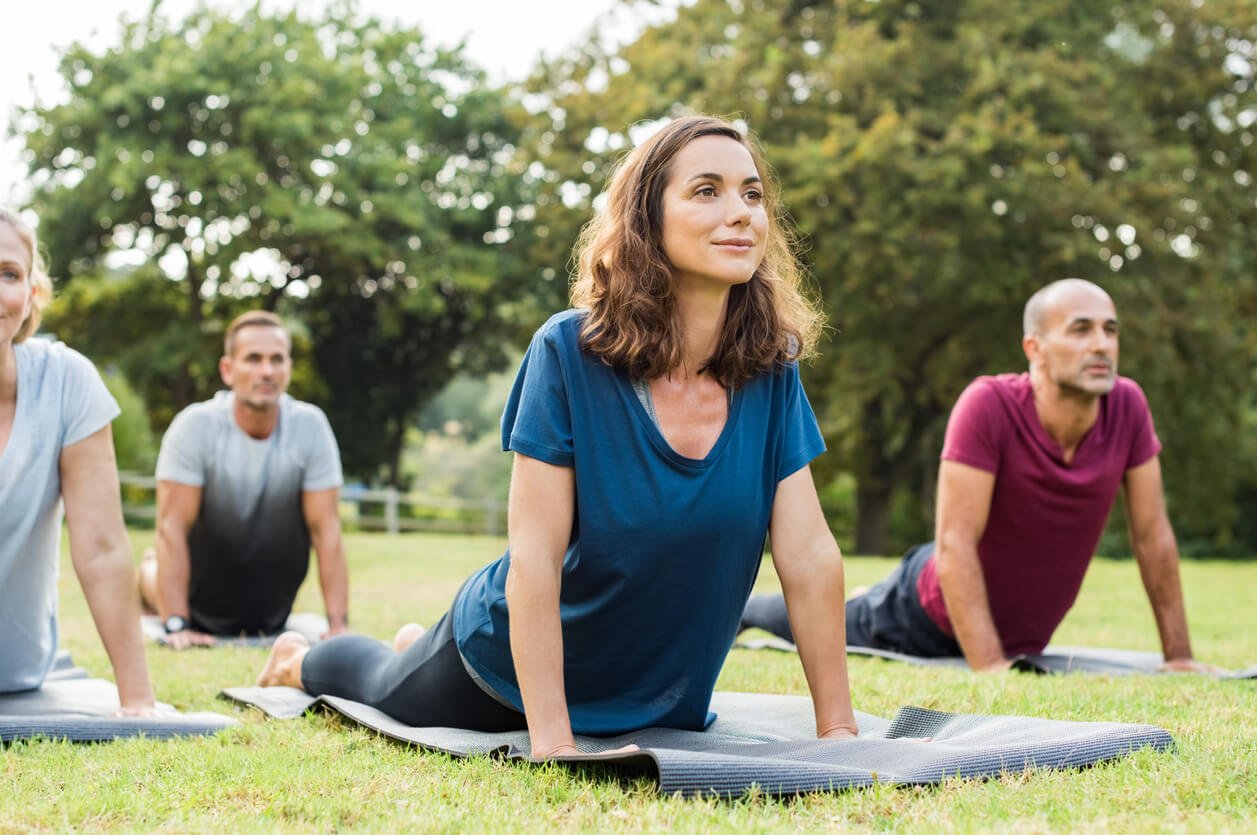
Speaking of mental health, outdoor exercise is one of the most powerful interventions ever studied for improving mood and psychological health. For starters, it appears to reduce anxiety, improve subjective well-being, and may even facilitate healing from trauma.
One study out of the University of Alabama found that individuals rated their subjective well-being and life satisfaction significantly higher after just a 20-minute walk in a park. They also reported a reduction in emotional stress, and relief from mental fatigue. Not bad for a stroll that takes less time than watching a rerun of Friends.
Certain outdoor environments appear to benefit mood and increase people’s energy more than others. For optimal results, you ideally want to find spaces with high biodiversity, water features, and shady woods. But the most important features appear to be related to safety and sociability. Good natural light, accessibility, and the presence of other friendly or at least respectful people create green spaces that are welcoming and conducive to forming and deepening connections with others, as well as nature itself.
Ecotherapy
And according to the relatively young field of ecotherapy, moving in nature may even help people process their emotions. While most western psychology views individuals as distinct units, or as members of families or communities, ecotherapists and depth psychologists see human beings as part of a web of life. As such, we’re incomplete and unsupported when we’re not immersed in that web and connected to other species and the earth.
Ecotherapy can work on the individual level, but confers additional power and efficacy when experienced as part of a group. Feelings of connection, gratitude, and awe are enhanced by being part of a community. One example of ecotherapy is the practice of forest bathing, which was developed in Japan, and has been shown to reduce symptoms of anxiety and depression.
Another example of ecotherapy looks a lot like trail running. In fact, it is trail running, done with the express intention of unwinding and connecting with others in a beautiful natural environment, in which case it’s called “trail therapy.” In addition to the awe-inspiring vistas and close encounters with trees and other plants (and hopefully not with their roots), trail running appears to foster mental health by inducing side-to-side eye movements, not unlike those experienced during REM sleep. Researchers tell us that “optic flow” calms some of the stress circuitry of the body, and may help us process difficult experiences by separating the emotional content of a memory from the current reality.
Remarkably enough, the increasingly popular trauma-healing technique known as EMDR was developed by psychologist Francine Shapiro while walking through the woods in 1989. Shapiro noticed that her own negative emotions lessened as her eyes darted from side to side. She found the same positive effect in patients. Today, more than 20,000 practitioners have been trained in EMDR. And although more research is needed, it appears to be very promising for treatment of trauma.
I’d be remiss if I didn’t include gardening as a form of green exercise as well. It may not seem as strenuous as mountain biking (the “going up” part, anyway) or racing Triathlons, but gardening can absolutely be a great physical workout. (Just ask anyone who’s trying to weed Bermuda grass out of an asparagus bed.) Perhaps more significantly, gardening also offers a host of mental health benefits, regardless of exertion level.
3. Green Exercise May Motivate You to Exercise More

Being in nature makes it easier and more fun to exercise. Not only that, we seem to move more vigorously, and for a longer duration, than when we’re indoors.
Studies show that people work out more intensely in nature — without feeling like they’re working harder. Something about oceans, mountains, meadows, and forests seems to lower rates of “perceived exertion,” which means people can go harder and longer than they do in gyms. But the positive effects of green exercise go far beyond exertion.
Because nature is so much more varied than built environments, there’s an inherent novelty factor involved in outdoor exercise. It’s easy to switch up what you’re doing to keep things interesting. You can walk, stroll, saunter, strut, jog, race walk, run, sprint, hop, skip, and jump over the same terrain. You can play a game, or go for a hike, or do pushups on the grass. In fact, you can exercise your creativity at least as much as your muscles!
How Green Fitness Can Benefit the Planet
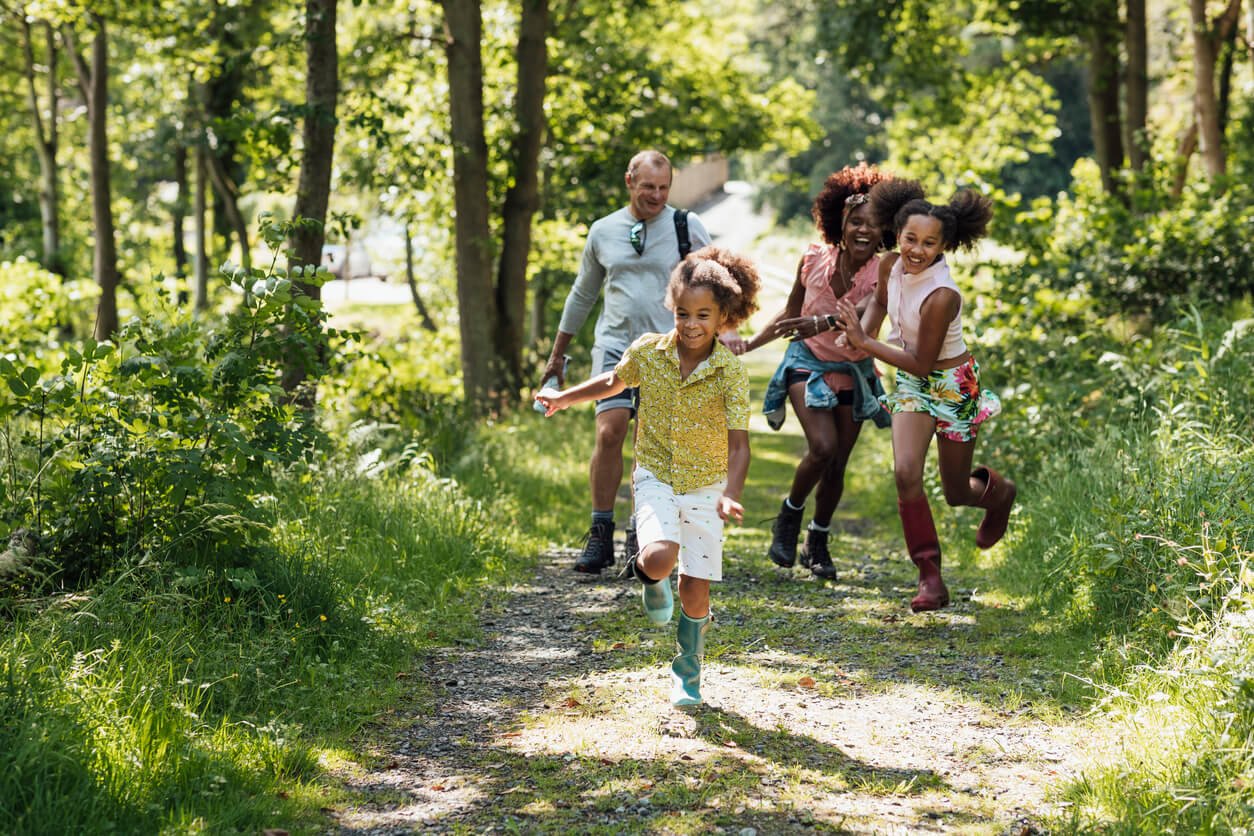
As ecotherapists have noted, we need nature to be healthy, whole, and happy. So it makes sense that as we engage in green exercise, we develop an appreciation and gratitude for the planet, and all the species that comprise our ecology. The more we immerse ourselves in nature, the more protective we can become of our beautiful Earth, and the greater likelihood we’ll pass on that attitude to future generations.
Greater appreciation for nature and its preservation
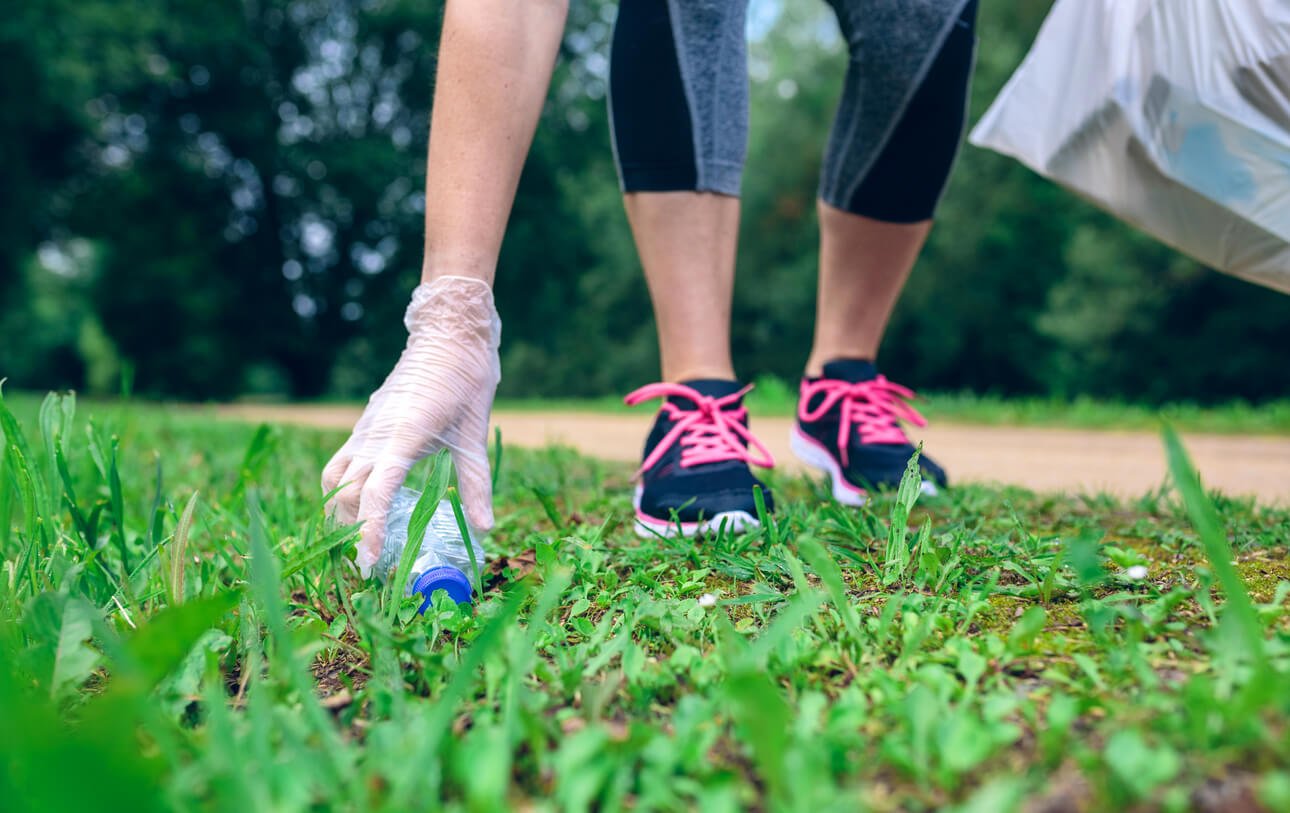
We all want good things to last. When nature becomes your playground and therapy couch, you instinctively want to preserve the spaces that are most healing and welcoming. People may begin encountering nature simply as a place to exercise, and may end up serving as activists to preserve and extend wild and cultivated natural spaces. They may also engage in quiet grassroots actions, such as combining exercise and litter pickup.
The charming neologism “plogging” is a portmanteau for “jogging” and “picking up litter.” You plog when you do both at the same time. If you’ve ever tried it, you may discover that it’s kind of addictive. Some folks report walking for miles more than they intended because they couldn’t turn around as long as they spied one more fast food clamshell or empty beer can. Also, depending on your technique, you can get in a lot of squats and lunges in addition to your walk or run. If you want to help catalog quantities and types of litter to support efforts to reduce their manufacture, you can download the Litterati app and participate in crowdsourced litter data collection. To join a global community of “ploggers,” visit GoPlogging.com.
While we’re exploring cute made-up words, we have to give a shoutout to strawkling, which signifies a combination of snorkeling and picking straws out of the ocean.
You can plog or strawkle by yourself, but it’s often easier, more fun, and more motivating to work out in a group. Enter green gyms, which employ conservation work as a form of fitness training. Instead of aerobics, participants in green gym “classes” engage in such activities as planting trees, sowing meadows, and digging ponds.
You can also join sports and outdoor organizations that encourage conservation. Examples include Surfrider, dedicated to preserving coastlines, and the Sierra Club.
Some groups organize sports events and competitions to raise money and awareness for environmental causes, too. Examples include the Run for Clean Air and the Climate Ride.
More outdoor activity increases demand for green spaces and access
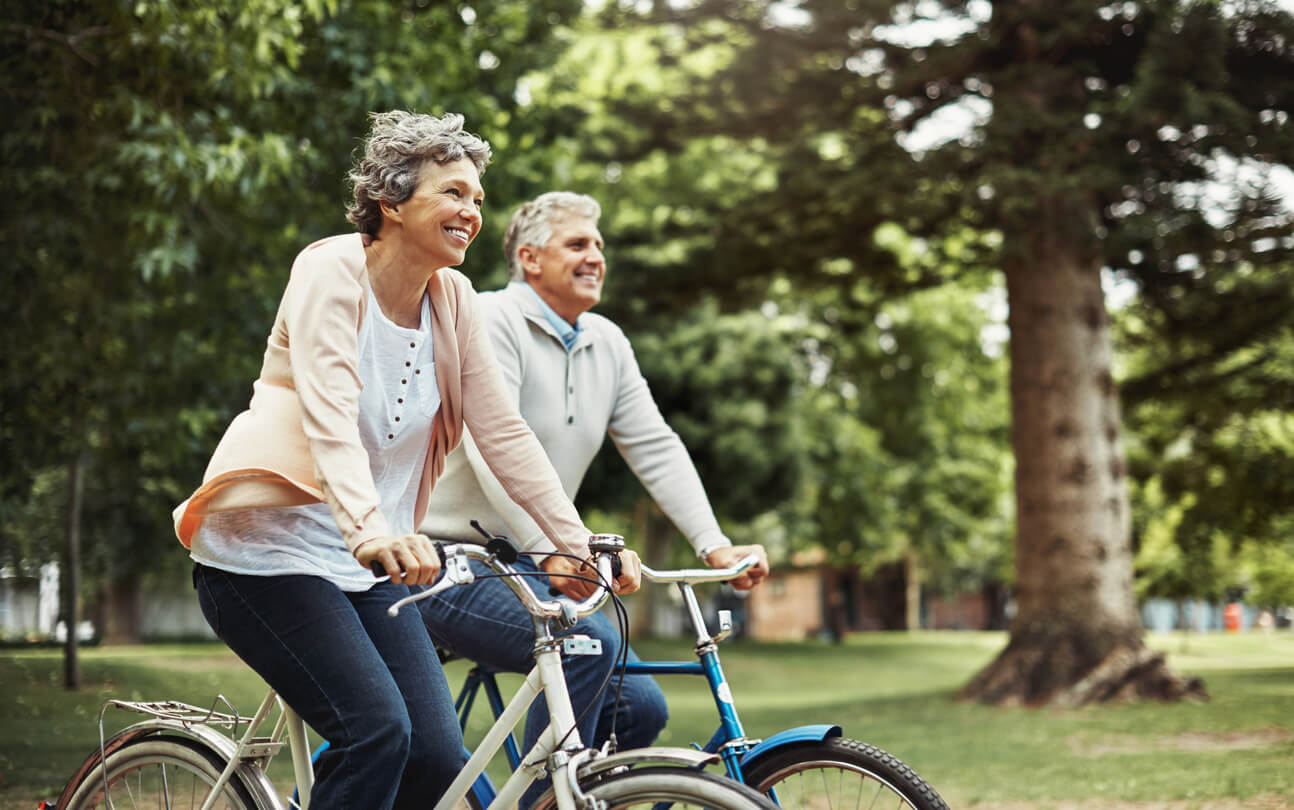
The more people use green spaces, the higher their priority. For example, the increase in bicycle ridership has put pressure on cities and businesses to provide bike racks for two-wheeled recreational riders and commuters, as well as the construction of bicycle lanes and investment in driver education about how to share the road with bikes.
More use of parks leads to more investment in parks. The more people walk, the more pedestrian paths and walkways get constructed. And as these become more accessible, more people will use them not just for recreation, but as scenic, safe, and convenient transport to work, school, and so on.
Of course, walking or cycling to work means not driving, which reduces traffic congestion, decreases pollution, drives down carbon emissions, and positively impacts climate change. Concerned and engaged community members can advocate for more community gardens, parks, and other green spaces in areas that are accessible by foot or bicycle. These kinds of features can transform neighborhoods and bring communities together to build a brighter, more inclusive, and healthier future for all.
Exercise can support other healthy habits, which is also good for the planet
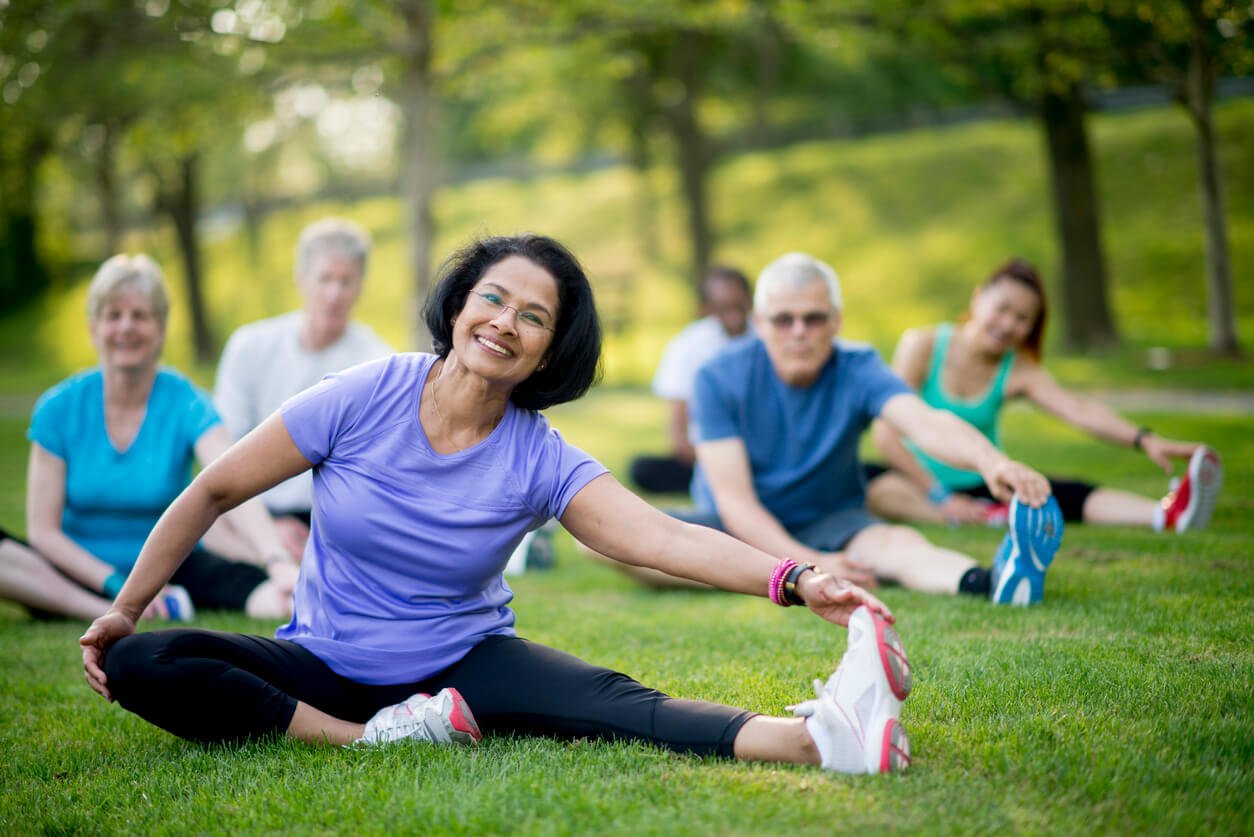
There’s a concept in behavioral science of the “keystone habit” — a single behavior that makes lots of other habits easier and more likely. One of the most common keystone habits is exercise. Regular physical exercise triggers “longitudinal gains in self-regulation,” which is psychology-speak for “do the right thing over time.” In one study, participants who exercised at least three times a week smoked less, drank less coffee and alcohol, ate better, performed household chores more diligently, improved their study habits, and monitored their spending better than those who did not have an established exercise habit.
And while the latest metabolic research suggests that exercise may not help us lose weight directly, being physically active can influence our food choices and our self-control, making it easier to reduce caloric intake and shed pounds. A 2019 study in the International Journal of Obesity reported that young adults who volunteered for a 15-week exercise program self-reported making better food choices during the study. Even though the 2,500 formerly non-exercising college students were explicitly told not to change their diets during the study, many did anyway. They ate less junk food, less fried foods, and less red meat, and replaced them with more fruits and vegetables, lean meats, fish, and nuts. And the more intensely they worked out, the more marked their dietary improvements became.
What does this have to do with helping the planet? Well, our food choices constitute one of our most powerful levers of change. What we eat, on a day-to-day basis, may affect the climate more than whether we drive a Tesla or a gas-guzzler, or whether we take 30-second cold showers or 45-minute hot ones. And moving away from processed foods and factory farmed animals, and toward fresh produce (ideally organic and locally grown) can reduce our carbon footprint significantly.
And that gardening thing I mentioned earlier? It comes with an amazing secondary benefit if it includes growing your own food. People who garden not only eat what they grow, but tend to make healthier food choices in general. In both these ways, they reduce their reliance on the industrial food system that contributes so greatly to climate destabilization.
Barriers to Green Fitness
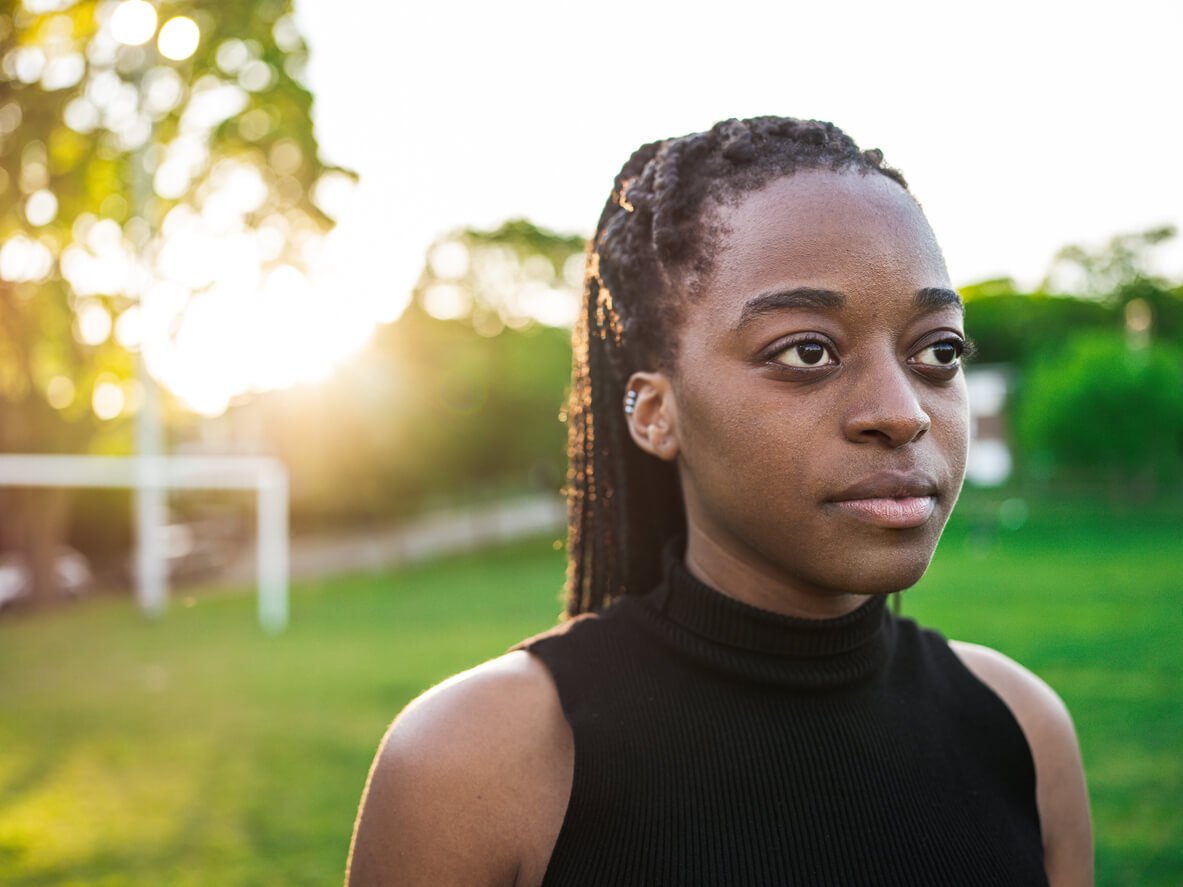
In a perfect world, we would all have unfettered access to the joys and glories of nature. In reality, access to green spaces for exercise and other pursuits tends to be very unequal. For example, people of color in the US are three times more likely than white people to live in places without immediate access to nature. They’re also more exposed to environmental pollutants. And naturally, they have less incentive to spend time outdoors if it comes with a side helping of air, water, and ground pollution.
History also plays a role in the segregation of outdoor spaces, especially public parks, swimming pools, and beaches. Both people of color and members of the LGBTQ+ communities have experienced animosity and even violence as they sought to enjoy these amenities.
Even the great environmental heroes of the United States, such as John Muir (cofounder of the Sierra Club) and Gifford Pinchot, the first head of the US Forestry Service, espoused deeply racist views about Black people and Native Americans, and actively sought to reserve natural spaces for whites.
There’s been a lack of representation as well, much of it at the hands of major outdoor fitness brands. Ads and commercials touting outdoor adventure have typically featured white people only, although some retailers such as REI are actively working to address and correct the imbalance.
Additionally, low-income individuals have less disposable income to spend on outdoor recreation activities. While many of us work toward equality and equity in access to nature, there are some strategies for enjoying the outdoors that cost little or no money. Walking, running, hiking on local trails, and performing bodyweight exercises in public parks can be free. Some parks feature outdoor gym equipment such as monkey bars, sit-up stations, and dip stations. Used bicycles can be fairly affordable. And some communities have bicycle collectives that take donated bikes, fix them up (and often teach community members to do so), and distribute them to community members who would like to start riding.
You can also join and support organizations that work for green fitness inclusion. These include GirlTrek and Unlikely Hikers. Black Men Run also has chapters in many major cities that seek to include Black men in the running boom — an especially challenging endeavor that may have become more important than ever since Ahmaud Aubery was murdered while jogging in a predominantly white Georgia suburb in 2020.
Making Green Fitness Accessible for All
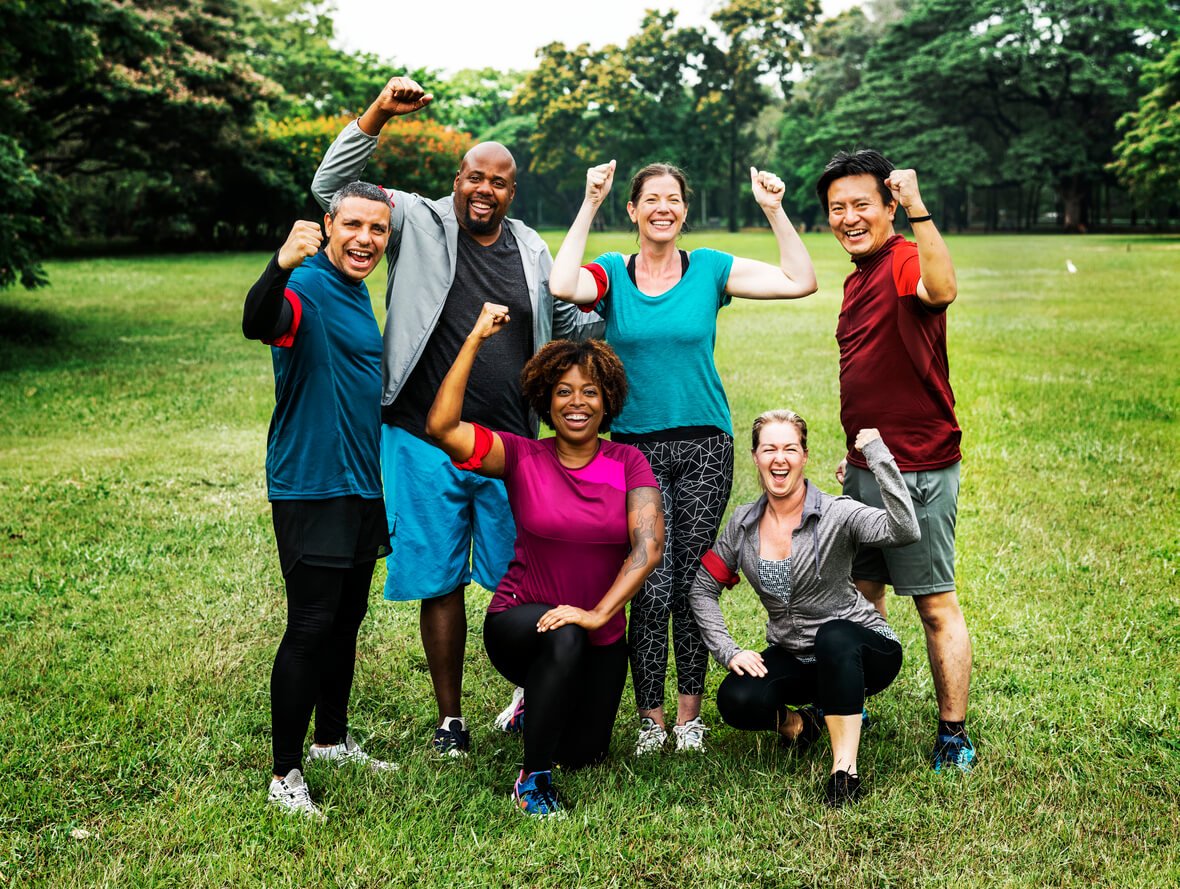
Green fitness is more than just exercising outdoors — it offers multiple benefits for both physical and mental health. And it can be good for the planet, too, by promoting appreciation and care of the environment (conservation), increasing access to green spaces and outdoor usage, and inspiring healthier habits. There are some barriers to getting outdoors that especially impact low-income communities and people of color. But increasing awareness of these issues and making green exercise more accessible to all is an important step that we need to take if we are to build a healthier and more inclusive world.





















































